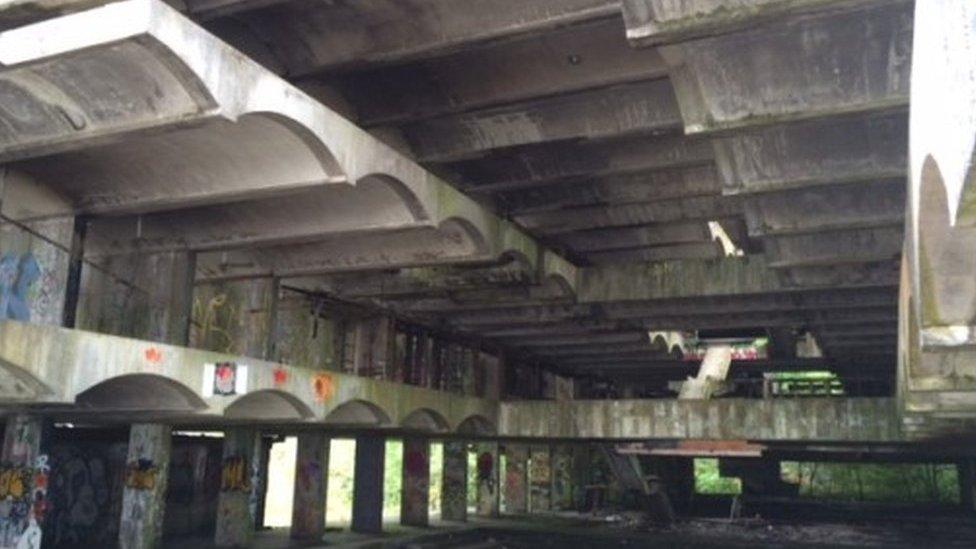Modernist ruin is an 'albatross around our neck' says church
- Published
Artist Angus Farquhar gives a tour of St Peter's Seminary
An A-listed modernist building has been described as an "albatross around our neck" by the Roman Catholic Church, who said they could not even give it away.
St Peter's Seminary in Cardross, near Dumbarton, was built in 1966 as a training college for priests.
It was once described as a "modernist masterpiece" but closed in the 1970s and lay empty until a plan emerged to turn it into a cultural centre.
However, that plan was shelved and the building is now set to remain a ruin.
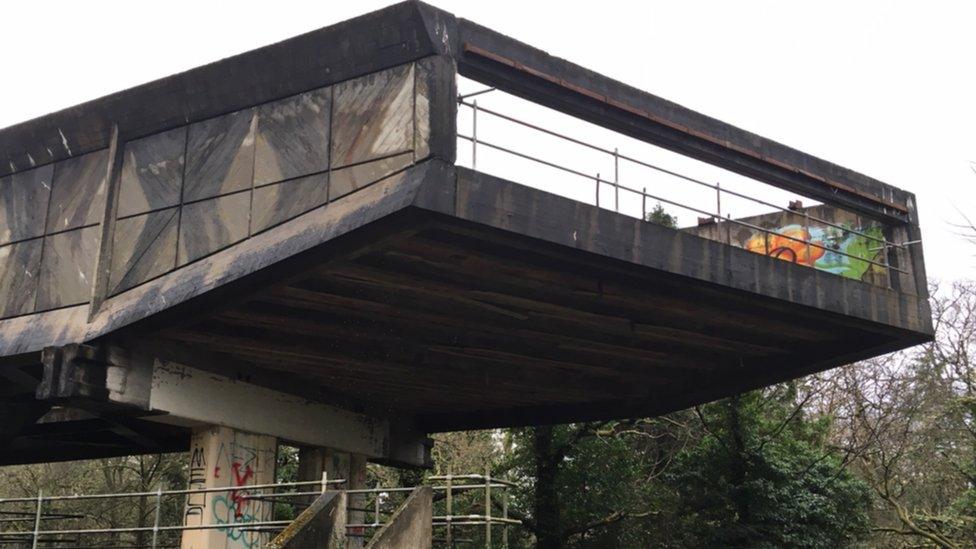
St Peter's Seminary was built by modernist architects Andy MacMillan and Isi Metzstein
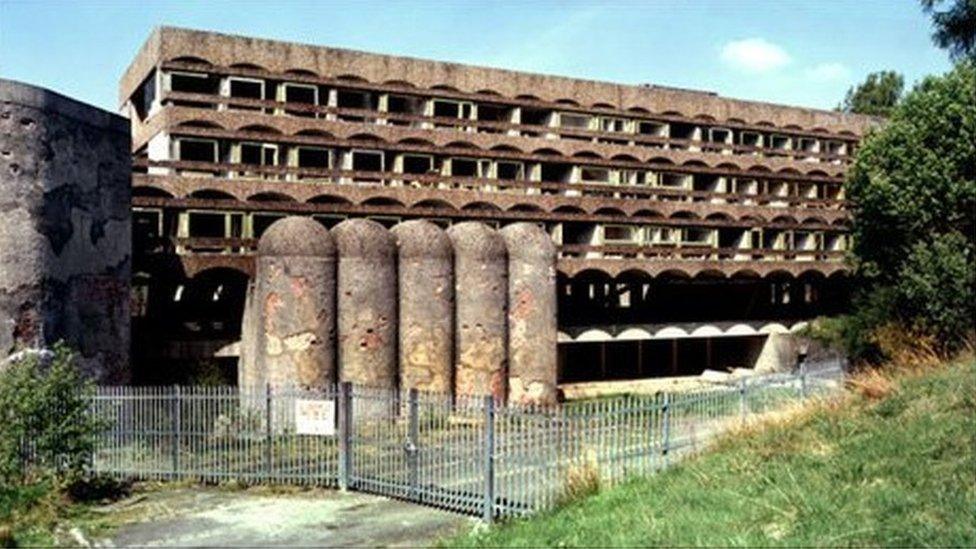
The building opened in 1966 and was deconsecrated in 1980
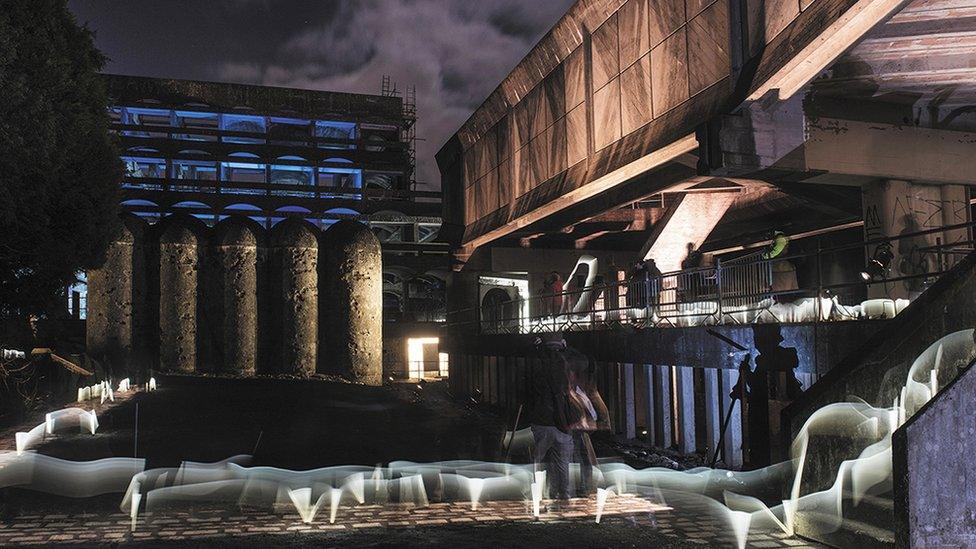
The seminary was used as a backdrop for a sound and light show called Hinterland by NVA in March 2016


The seminary, which is surrounded by acres of woodland, was designed by Scottish architectural firm Gillespie, Kidd and Coia for the Archdiocese of Glasgow.
Renowned architects Andy MacMillan and Isi Metzstein supplied the vision for the distinctive zig-zag design and concrete appearance, with internal features such as vaulted ceilings and floating staircases.
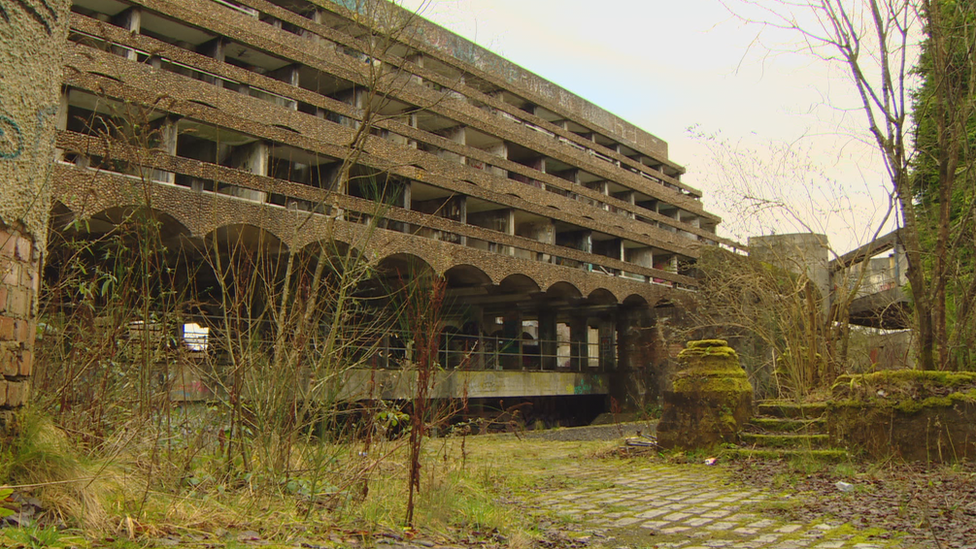
St Peter's Seminary was built in 1966 as a training college for priests
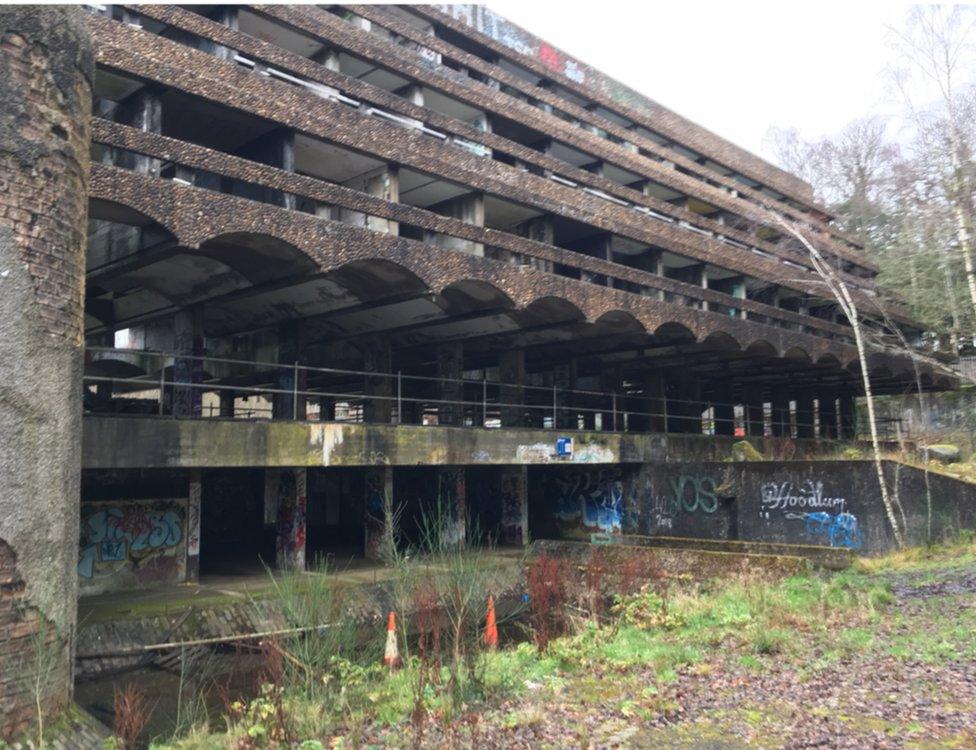
The seminary is considered a modernist masterpiece
The structure came to be considered a modernist masterpiece but its working lifetime was short and when the number of trainee priests fell, the seminary was deconsecrated in 1980.
Since then, the building has became degraded by fire, rain and vandalism, but it still regularly attracts visits from architecture students and aficionados from around the world.
Its importance was recognised in 1992 when the seminary was Category A listed by Historic Scotland.

Prof Alan Dunlop said the building was of international importance
Architecture expert Prof Alan Dunlop told BBC Scotland its A-listing showed it was a building of international importance.
He said: "I would go as far as saying this building is as important as Charles Rennie Mackintosh's Glasgow School of Art.
"That is how high I rate its place in the pantheon of Scottish architecture.
"This is unequivocally an excellent structure that is worth saving."
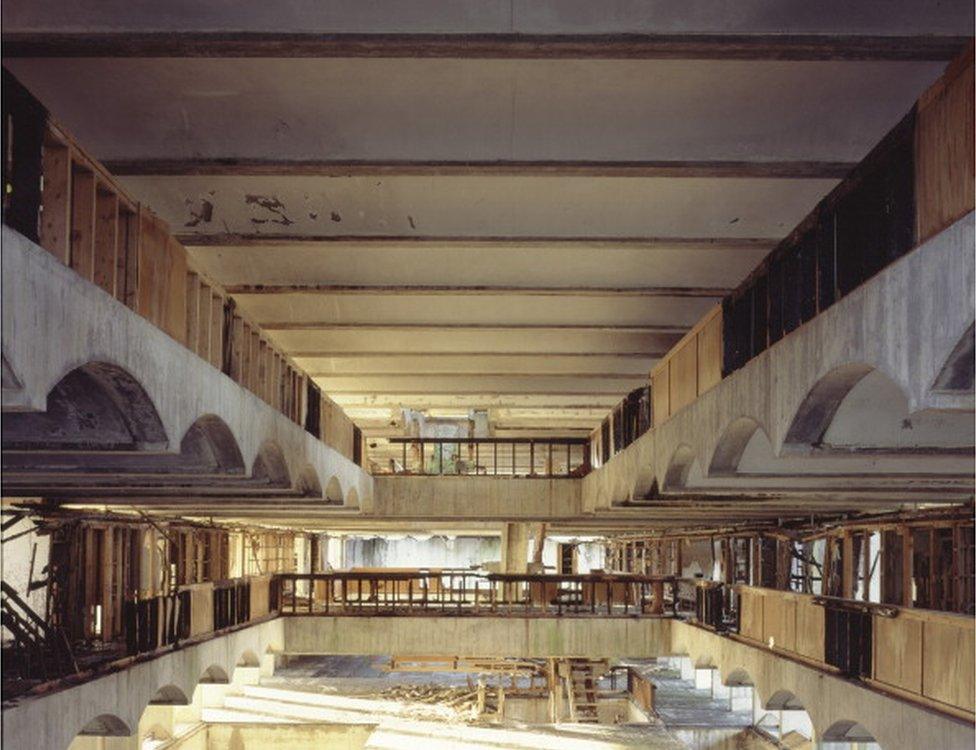
The inside of the seminary pictured in 2004 before work was carried out to make the area safe

Work has been carried to clear debris and make the building safe but the organisation behind the move went bust
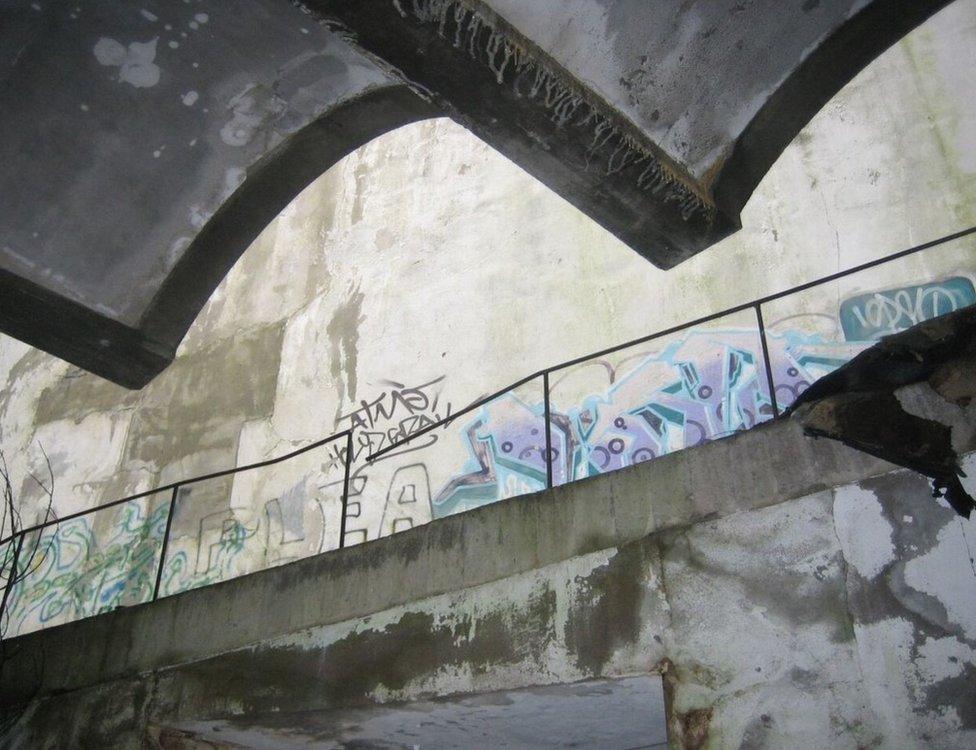
The secluded seminary has been a target for vandalism and graffiti
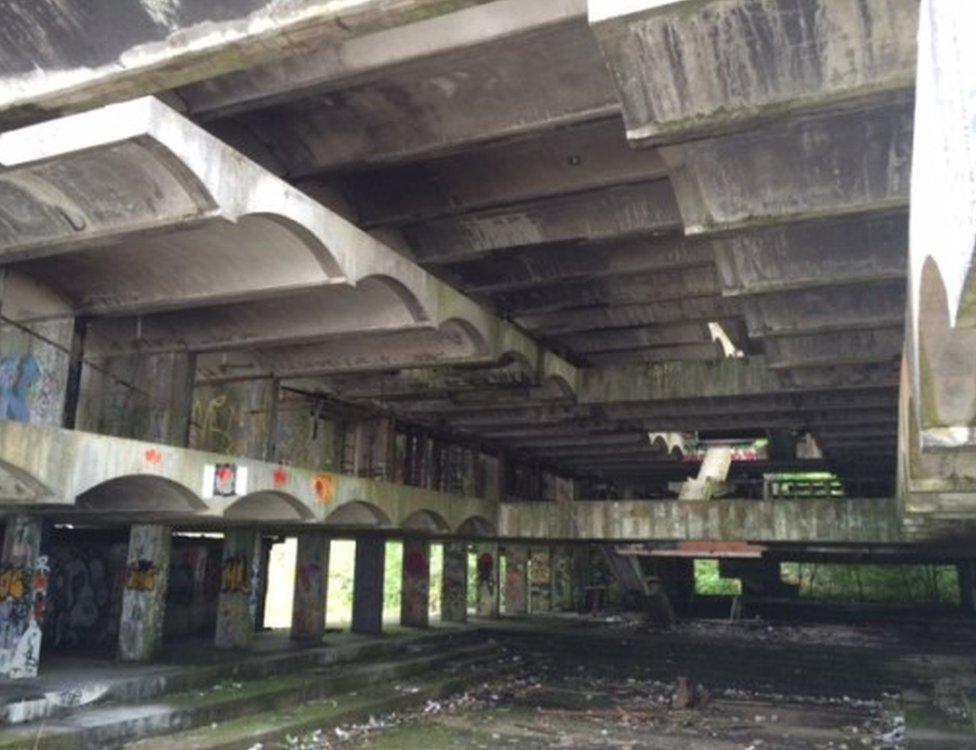
Some have likened the building to a disused car park but others consider it a classic
The Archdiocese of Glasgow has been trying to find someone to take the building on for decades but now fears it will have to remain a ruin.
Its director of communications Ronnie Convery told BBC Scotland that after 40 years they were "back to scratch".
He said: "We would literally give it away for nothing but we can't find anyone to take it off our hands."

Church spokesman Ronnie Convery said it was a Catch-22 situation
Until June last year there was hope for the building, with arts organisation NVA working on turning it into an arts venue and cultural centre.
It spent about £3m trying to make the building safe and removing hazardous materials such as asbestos.
In 2016 it staged Hinterland, a sound and light display using the ruin as a spectacular backdrop.
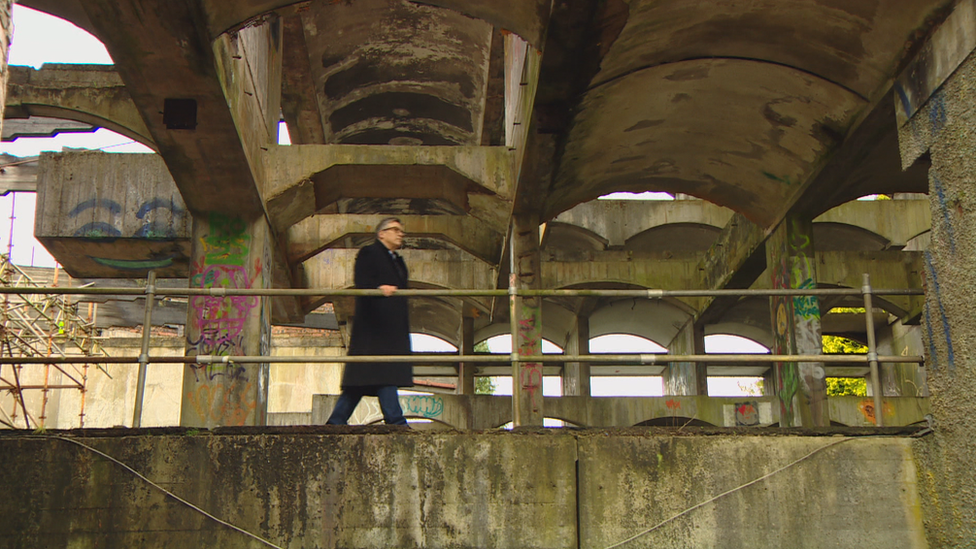

However, NVA closed down last year, saying the challenges facing the company were "compounded" when a core funding bid to Creative Scotland was unsuccessful.
Mr Convery said the Scottish government had recently ordered a study into what could be done to save the building for the nation.
He expects that report to be published soon.
The church spokesman said he thought public funding was now the only way forward.
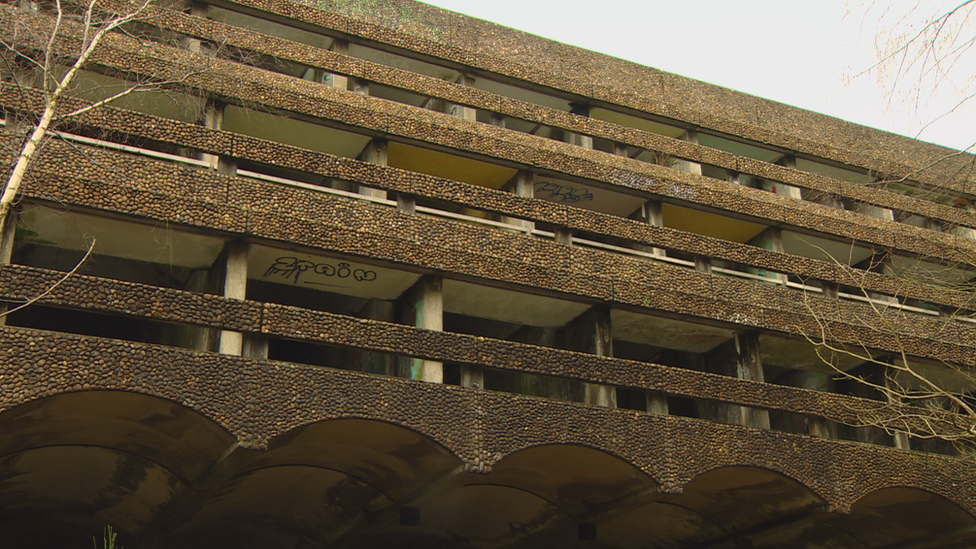
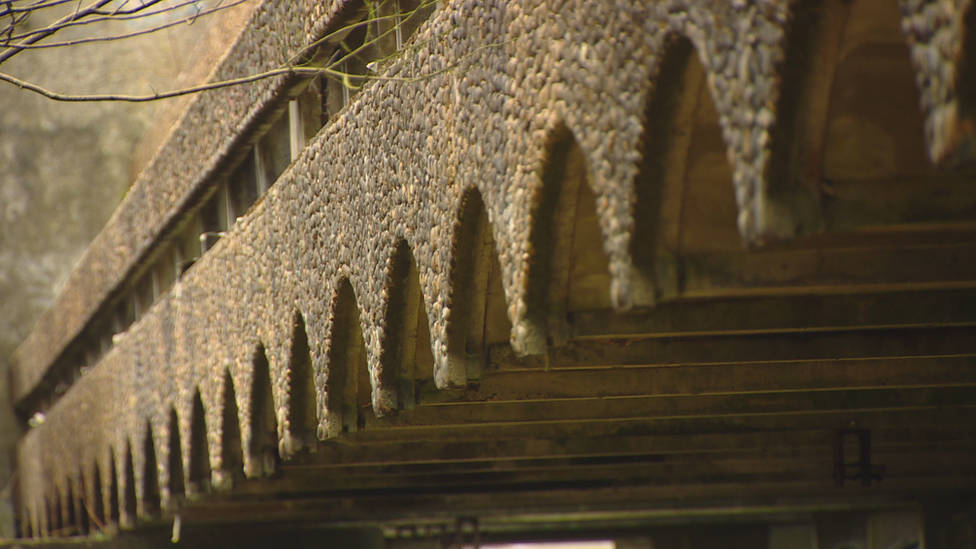
Mr Convery said: "If someone were to go today through the forest and try to find this A-listed masterpiece they would probably be shocked because it looks to an average person, who does not have a lot of architectural background, a bit like a concrete car park that has fallen into ruin.
"For those who understand such things, the Brutalist architecture of the day, the materials used, were unique.
"It draws heavily from Le Corbusier's work in the south of France and was part of the Gillespie, Kidd and Coia and Coia empire and is considered the best of their works.
"Therefore it is a significant building for the nation and probably one that needs public money to survive."
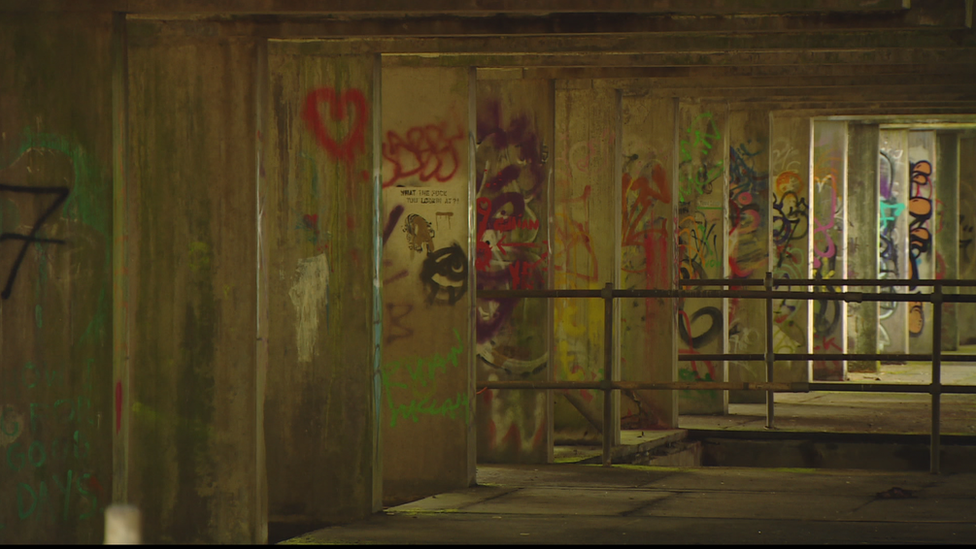

Mr Convery added: "The archdiocese recognises that it has the responsibility to maintain the estate, to keep it secure and provide the proper insurance cover, but as you can imagine it is a huge albatross around our neck.
"We are literally struck, it is an impossible position.
"We can't sell it, we can't give it away, we can't demolish it. We are in a Catch-22 situation."
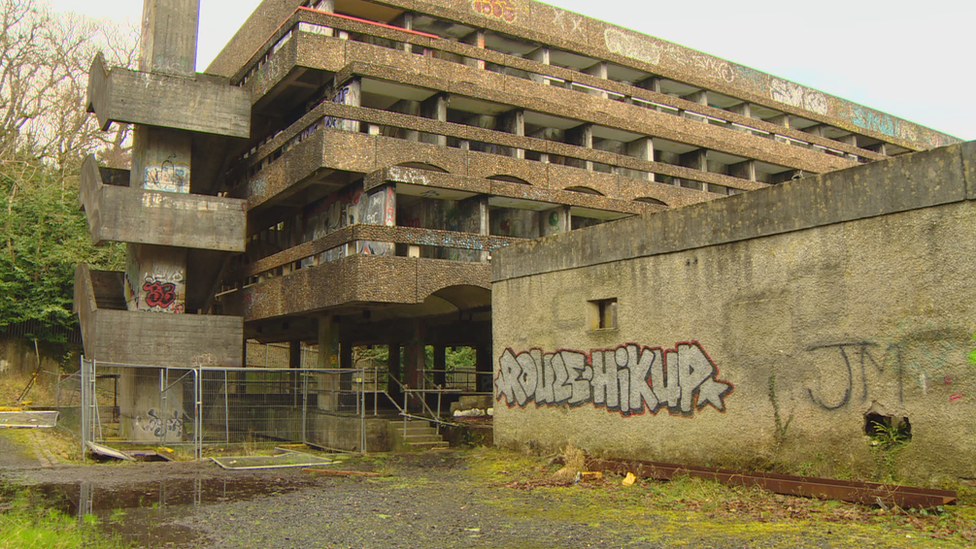
Prof Dunlop said he hoped the government would look favourably on the building and spend money on saving it.
"I would be happy to tell them how extraordinary it is and how architects from around the world would want to come and see it," he said.
"It is not until you get on site and explore it that you appreciate the true qualities it has."
A Scottish government spokesman said: "In the first instance, the future of the building is a matter for the Archdiocese of Glasgow, who own the building.
"Scottish ministers asked Historic Environment Scotland for advice on potential options for the future of the former seminary, and the wider site. This is under consideration."
The seminary lies in the Argyll and Bute Council area.
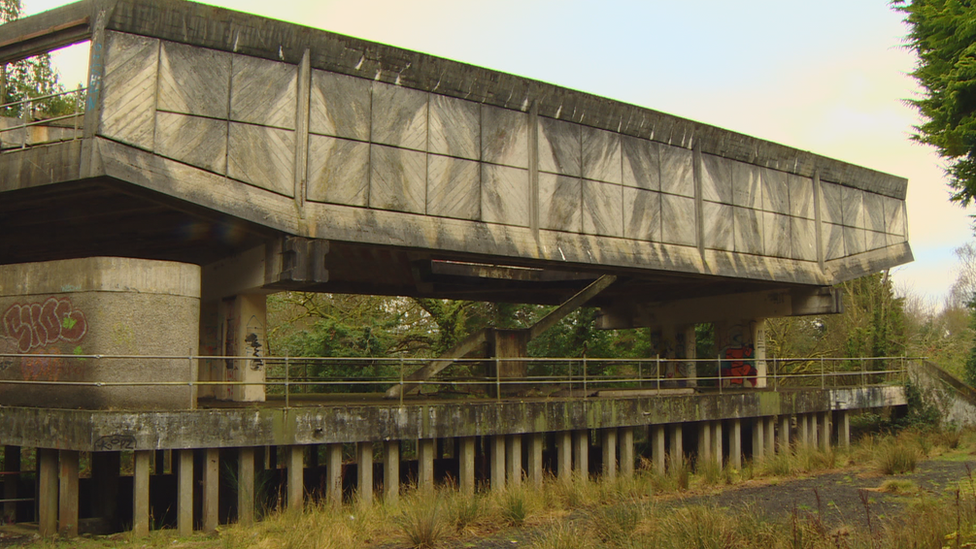
A spokeswoman for the council said St Peter's was on greenbelt land which restricted any possibility of new development.
However, she said the area around the seminary had been designated an "Area for Action", which offered the possibility of opportunities for public leisure and recreational purposes.
- Published5 June 2018
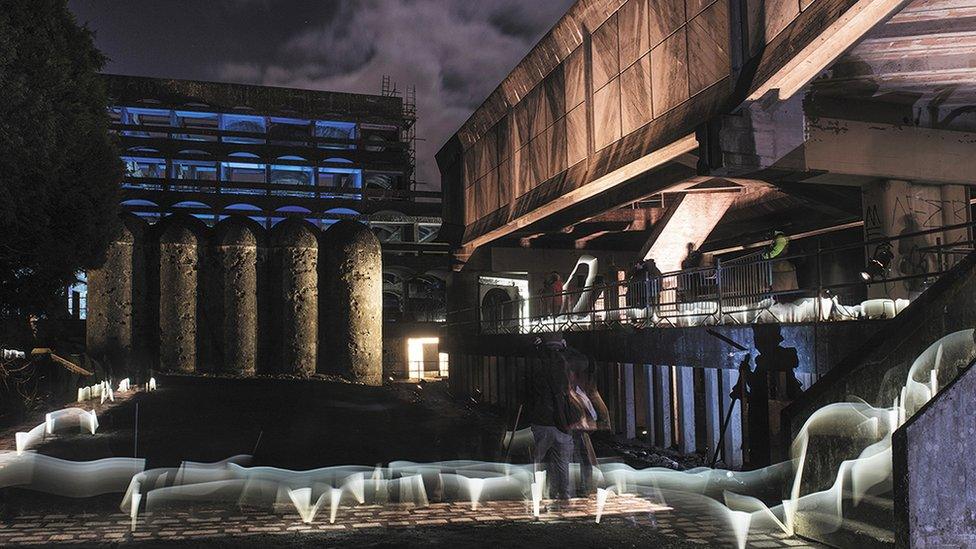
- Published12 February 2017
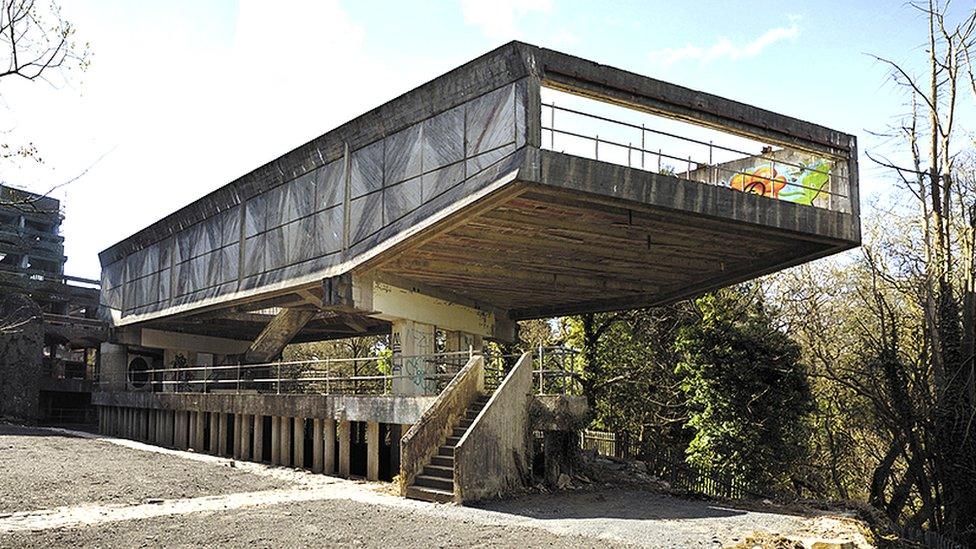
- Published18 March 2016
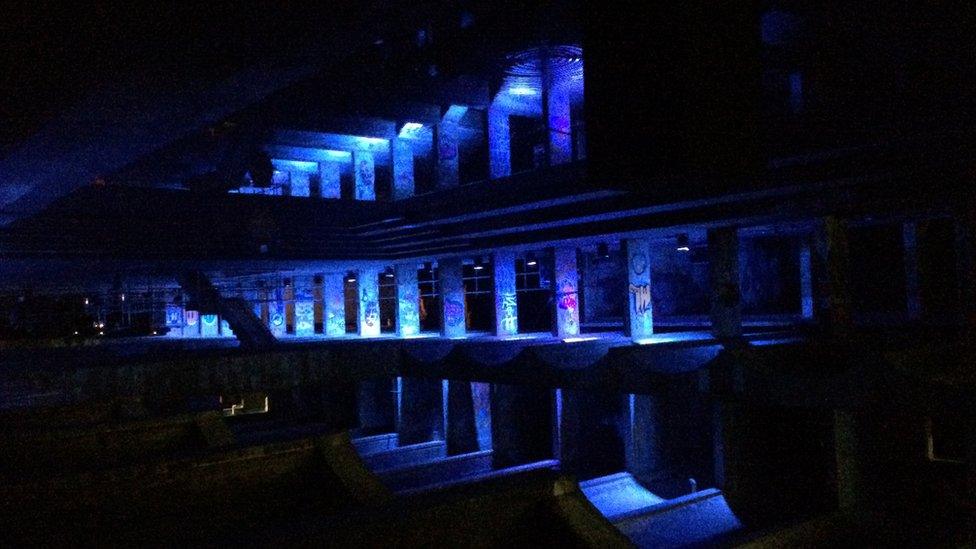
- Published19 March 2016
